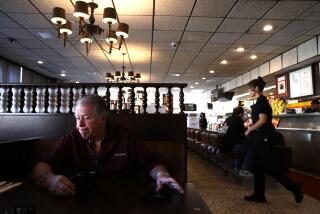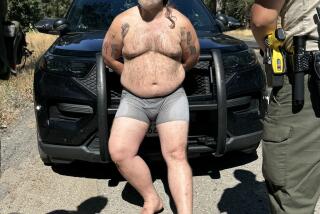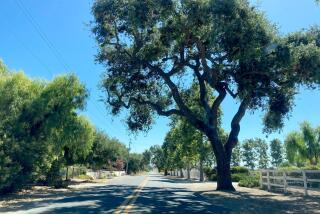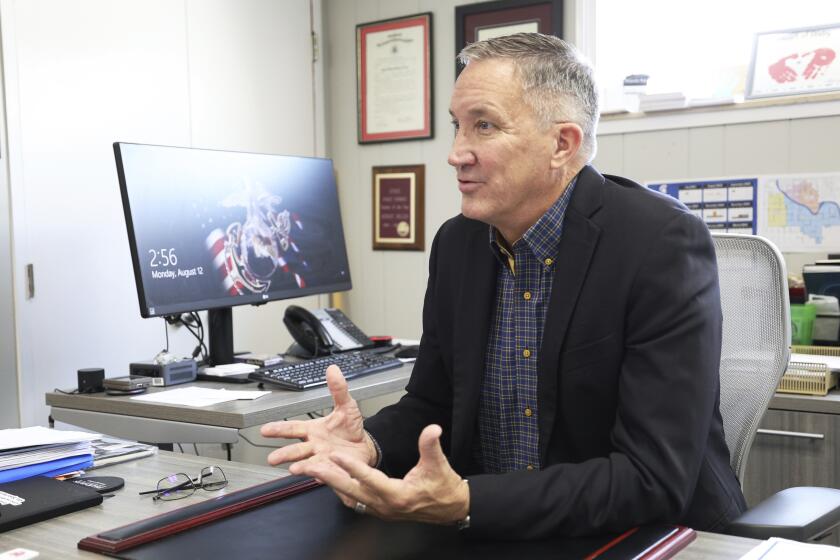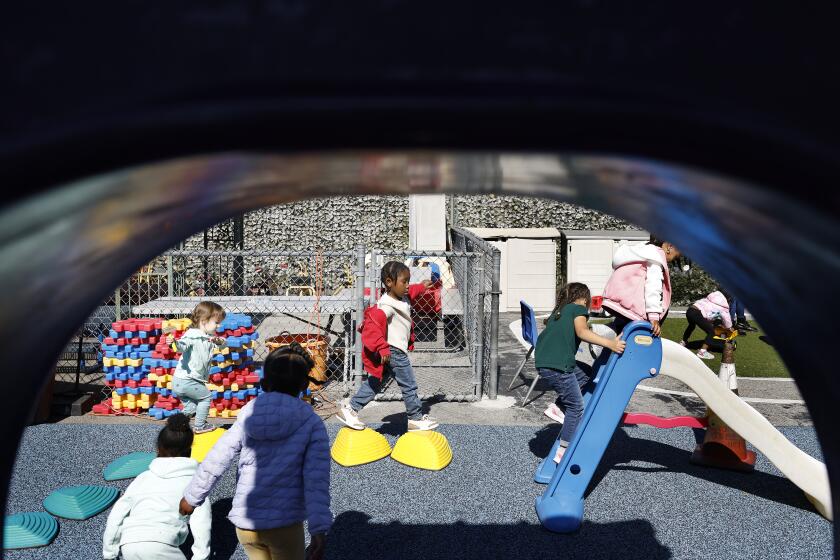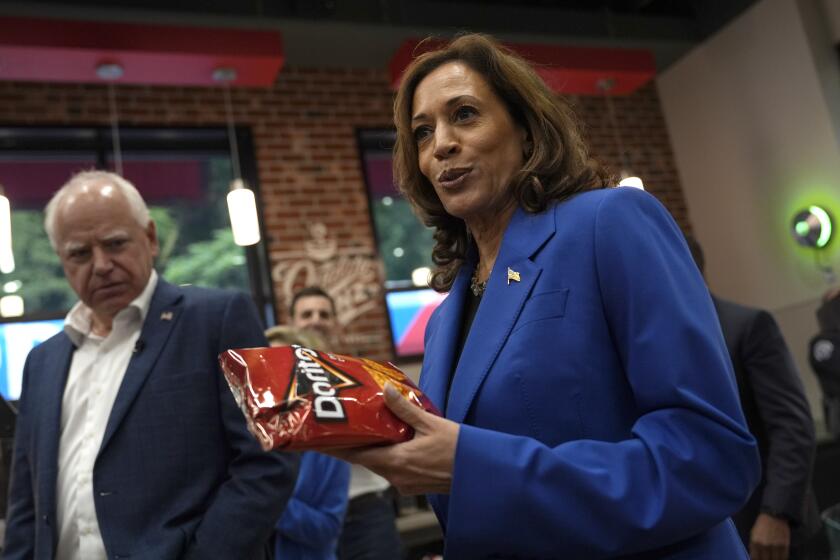Hands-On Seminar : Teaching Teachers New Tricks
Brian Tash began his weekend science workshop for teachers by handing out small graham crackers, each with a dab of yellow, blue and red frosting on top. Teacher Jo Ann Frye from San Diego’s Lowell Elementary School took a small wooden coffee stirrer and mixed the colors together to get new hues of purple, orange and green, practicing what she and the others plan to try later with their elementary school students.
Not only was Tash--a teacher from Lincoln Junior High in Oceanside--showing a way to teach the elements of color in an exciting way, he was also showing how to minimize the cost of materials and the pain of cleaning up after a hands-on science project.
“It’s less messy,” Tash told his packed audience. “The kids eat (the crackers) later!”
Fancy Gadgets, Too
Upstairs from the color workshop, biology instructors Mike Morris and John Earnest from Poway’s Mt. Carmel High were busy measuring the amount of light absorbed by a plant--known as photosynthesis--using a spectrophotometer. William Reed of University City High was leading the group of high school teachers through the use of the fancy device--only recently acquired at most county schools--which most of the teachers had not used since their college science days.
“It’s got a lot of applications,” said Judith Reith of Point Loma High, “and I think it could be really helpful in encouraging students to do projects for the science fair.”
In room after room at Mission Valley’s Doubletree Hotel last weekend, more than 500 teachers from throughout the county crowded into workshops featuring everything from robots and pendulums to gardens and oceans. In a collegial way, they were increasing both their confidence in teaching science and learning a “bag of tricks” to boost students’ excitement for learning.
The fourth annual Science Conference, sponsored by the San Diego Science Educators Assn., had a special edge to its presentations this year.
Educators at local, state and national levels have begun to demand more science in schools, especially at the elementary level. In addition, officials of the California Assessment Program (CAP), the standardized test used to measure and compare the performance of school districts and individual schools statewide, will begin testing sixth-graders in science next year. Because CAP performance is a major factor affecting both public support and school morale, teachers flocked to the weekend conference to exchange ideas.
“This is far better than last year,” Mary Bednasek of Green Elementary in San Diego said. “It’s better organized, it’s got a lot of hands-on, it’s much more positive . . . I’m impressed with the expertise, the way they are giving us practical ideas on how to turn kids on.”
Frye of Lowell Elementary appreciated the way that most of the lessons were coordinated with the state Department of Education’s science curriculum goals.
Good Turnout
The chief science curriculum specialist for the San Diego city schools expressed delight at the large number of teachers that attended.
“I was concerned, frankly, how many we would have because this was on a Friday and Saturday and the teachers are here voluntarily,” Vance Mills said. In addition, teachers from numerous districts around the county are in protracted and somewhat acrimonious contract negotiations, and unions in some districts have called for teachers to “work to rule” and exert no extra effort for their schools.
“I think we all are realizing that science cannot be part time in elementary schools,” Mills said. “And the CAP tests are an engine (that spurs) more interest.”
Mills also praised the exchange of ideas, due in large part, he said, to the non-threatening nature of a conference given away from the pressures of an individual school site.
“Too often at an individual school, a teacher has his or her own classroom and there is no real interaction (between other teachers) about methods, etc.,” he said. “Here, there is real collegiality, they interact everywhere . . . it’s real hard to do it in the schools, although that would be the ideal.”
Learning New Ways
That exchange of ideas, the learning among teachers, is critical to plans by the San Diego district to revamp its secondary school curriculum to require more college-preparatory classes for more students. New instruction techniques will be required in many cases so that teachers can reach students who have not been motivated or excited about learning up until now.
“Teachers do have to buy into new ideas and new curriculum,” Frye of Lowell said. “Sure, there are tried-and-true methods of doing things but that doesn’t mean we can’t learn new approaches.”
Frye nodded her head frequently as Tash threw out idea after idea for elementary-level science.
“Spare the food activities to maybe once a month,” Tash said in handing out the graham crackers. “Otherwise, the kids will expect food all the time. Emphasize process skills as well as content . . . don’t tell the students the answer but let them find out for themselves, even if it means writing or doing research . . . after all, we want to have them learn across the curriculum as much as possible and it does work.”
Teachers in another workshop grew wide-eyed as Scott Hays from Coffee Creek Elementary School in the Trinity Alps of northern California demonstrated how a box of crushed walnut shells and a pitcher of water could be used to show how water creates rivers, deltas, lakes, canyons and other natural features through erosion.
Hays has helped adapt an environmental education program from the National Wildlife Federation for use in California.
“It creates interest, not only among the students, who can then plot or draw or write up what they create for themselves, but interest as well among stolid, stodgy old teachers,” he said with a wink.
More to Read
Sign up for Essential California
The most important California stories and recommendations in your inbox every morning.
You may occasionally receive promotional content from the Los Angeles Times.
